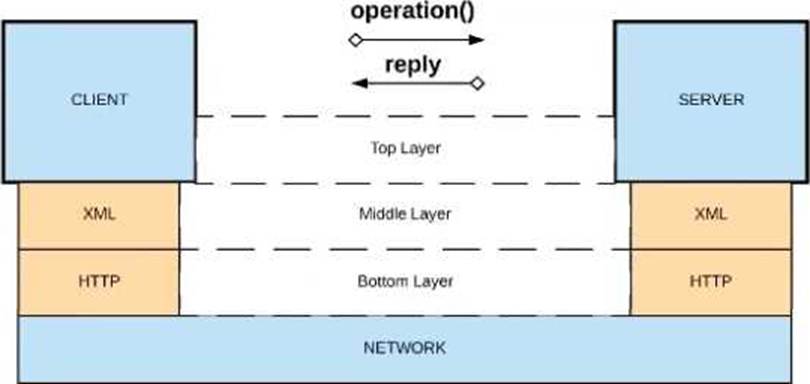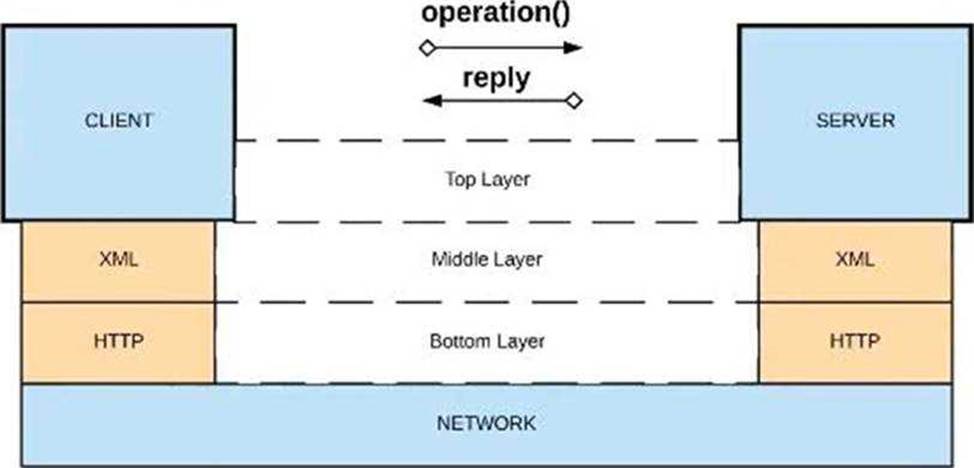Practice Free MuleSoft Platform Architect I Exam Online Questions
Refer to the exhibit.

What is a valid API in the sense of API-led connectivity and application networks?
A) Java RMI over TCP
B) Java RMI over TCP
C) CORBA over HOP
D) XML over UDP
- A . Option A
- B . Option B
- C . Option C
- D . Option D
D
Explanation:
Correct Answer XML over HTTP
>> API-led connectivity and Application Networks urge to have the APIs on HTTP based protocols for building most effective APIs and networks on top of them.
>> The HTTP based APIs allow the platform to apply various varities of policies to address many NFRs
>> The HTTP based APIs also allow to implement many standard and effective implementation patterns that adhere to HTTP based w3c rules.

Bottom of Form
Top of Form
Refer to the exhibit.

What is a valid API in the sense of API-led connectivity and application networks?
A) Java RMI over TCP
B) Java RMI over TCP
C) CORBA over HOP
D) XML over UDP
- A . Option A
- B . Option B
- C . Option C
- D . Option D
D
Explanation:
Correct Answer XML over HTTP
>> API-led connectivity and Application Networks urge to have the APIs on HTTP based protocols for building most effective APIs and networks on top of them.
>> The HTTP based APIs allow the platform to apply various varities of policies to address many NFRs
>> The HTTP based APIs also allow to implement many standard and effective implementation patterns that adhere to HTTP based w3c rules.

Bottom of Form
Top of Form
An organization makes a strategic decision to move towards an IT operating model that emphasizes consumption of reusable IT assets using modern APIs (as defined by MuleSoft).
What best describes each modern API in relation to this new IT operating model?
- A . Each modern API has its own software development lifecycle, which reduces the need for documentation and automation
- B . Each modem API must be treated like a product and designed for a particular target audience (for instance, mobile app developers)
- C . Each modern API must be easy to consume, so should avoid complex authentication mechanisms such as SAML or JWT D
- D . Each modern API must be REST and HTTP based
B
Explanation:
Correct Answers:
When designing an upstream API and its implementation, the development team has been advised to NOT set timeouts when invoking a downstream API, because that downstream API has no SLA that can be relied upon. This is the only downstream API dependency of that upstream API.
Assume the downstream API runs uninterrupted without crashing.
What is the impact of this advice?
- A . An SLA for the upstream API CANNOT be provided
- B . The invocation of the downstream API will run to completion without timing out
- C . A default timeout of 500 ms will automatically be applied by the Mule runtime in which the upstream API implementation executes
- D . A toad-dependent timeout of less than 1000 ms will be applied by the Mule runtime in which the downstream API implementation executes
A
Explanation:
Correct Answer An SLA for the upstream API CANNOT be provided.
>> First thing first, the default HTTP response timeout for HTTP connector is 10000 ms (10 seconds). NOT 500 ms.
>> Mule runtime does NOT apply any such "load-dependent" timeouts. There is no such behavior currently in Mule.
>> As there is default 10000 ms time out for HTTP connector, we CANNOT always guarantee that the invocation of the downstream API will run to completion without timing out due to its unreliable SLA times. If the response time crosses 10 seconds then the request may time out.
The main impact due to this is that a proper SLA for the upstream API CANNOT be provided.
Reference: https://docs.mulesoft.com/http-connector/1.5/http-documentation#parameters-3
What is the most performant out-of-the-box solution in Anypoint Platform to track transaction state in an asynchronously executing long-running process implemented as a Mule application deployed to multiple CloudHub workers?
- A . Redis distributed cache
- B . java.util.WeakHashMap
- C . Persistent Object Store
- D . File-based storage
C
Explanation:
Correct Answer Persistent Object Store
>> Redis distributed cache is performant but NOT out-of-the-box solution in Anypoint Platform
>> File-storage is neither performant nor out-of-the-box solution in Anypoint Platform
>> java.util.WeakHashMap needs a completely custom implementation of cache from scratch using Java code and is limited to the JVM where it is running.
Which means the state in the cache is not worker aware when running on multiple workers. This type of cache is local to the worker. So, this is neither out-of-the-box nor worker-aware among multiple workers on cloudhub. https://www.baeldung.com/java-weakhashmap
>> Persistent Object Store is an out-of-the-box solution provided by Anypoint Platform which is performant as well as worker aware among multiple workers running on CloudHub. https://docs.mulesoft.com/object-store/
So, Persistent Object Store is the right answer.
An existing Quoting API is defined in RAML and used by REST clients for interacting with the quoting engine. Currently there is a resource defined in the RAML that allows the creation of quotes; however, a new requirement was just received to allow for the updating of existing quotes.
Which two actions need to be taken to facilitate this change so it can be processed? Choose 2 answers
- A . Update the API implementation to accommodate the new update request
- B . Remove the old client applications and create new client applications to account for the changes
- C . Update the RAML with new method details for the update request
- D . Deprecate existing versions of the API in Exchange
- E . Add a new API policy to API Manager to allow access to the updated endpoint
AC
Explanation:
To accommodate the new requirement of allowing updates to existing quotes, the following actions should be taken:
Update the RAML Definition (Option C):
The RAML specification defines the structure and behavior of the API. Adding a new method (such as PUT or PATCH) for updating quotes requires modifying the RAML to include this new endpoint. This ensures the API specification is up-to-date and accurately reflects the new functionality. Update the API Implementation (Option A):
Once the RAML is updated, the backend API implementation must also be modified to handle the new update requests. This could involve adding logic to process and validate update requests, connect to necessary backend resources, and apply the changes to existing quotes. of Incorrect Options:
Option B (removing and creating new clients) is unnecessary; client applications can remain as they are, with no need for complete replacement.
Option D (deprecating existing versions) may not be required if backward compatibility is maintained.
Option E (adding a new policy) does not facilitate functional changes and is unrelated to
implementing the update feature.
Reference
For more details on updating RAML definitions and API implementations, refer to MuleSoft’s API Design documentation on RAML and RESTful API practices.
